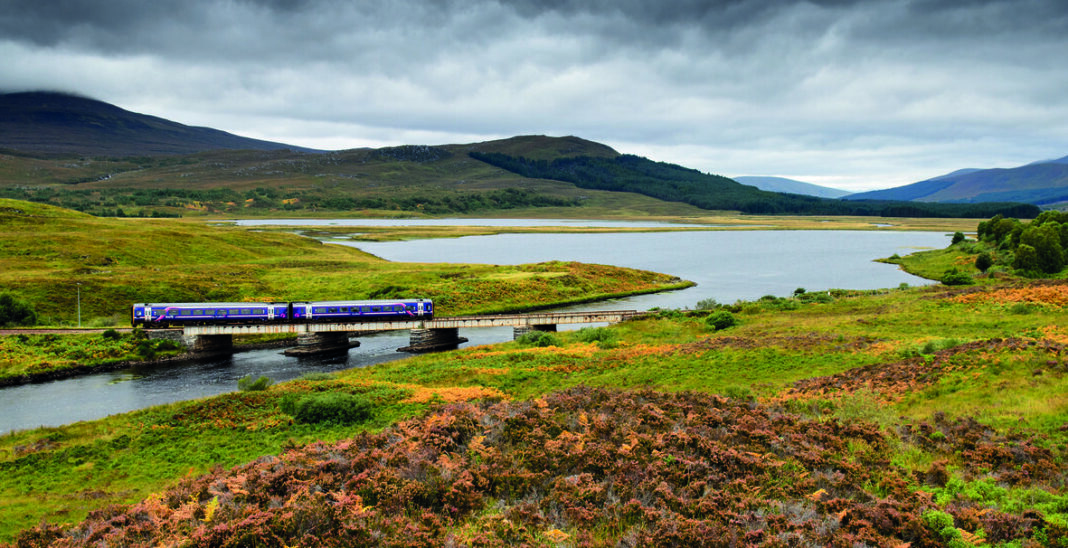Tech
Comment | How Next Gen Tech Can Power Scotland’s Bioeconomy

In just a few decades, technology has transformed nearly every aspect of the world, changing the way we communicate, work, and solve problems. This surge of innovation has steadily advanced within the bioeconomy as well, where digital tools are redefining how lab-based research is conducted.
Traditionally resource-heavy and labour-intensive, lab operations are now becoming more efficient through technologies like artificial intelligence (AI), virtual reality (VR), and enhanced data visualisations, opening up new possibilities for faster, more sustainable growth in bio-based businesses.
Take drug discovery, for example – what once required time-consuming manual testing of countless variables can now be streamlined by AI algorithms. These algorithms rapidly analyse vast datasets, delivering accurate results in a fraction of the time.
But it is not only about saving time. There are three key areas where next generation technology is already being successfully applied to accelerate biotechnology processes and drive business growth.
The first is in terms of sustainability. With greater ability to streamline processes, there is inevitably less waste and energy consumption.
A recent IBioIC-supported project with Neochromosome – a synthetic DNA and cell engineering company – and the University of Edinburgh demonstrated how AI can optimise enzyme design for therapeutic applications, such as treatments for genetic and autoimmune disorders like diabetes. By reducing the need for extensive physical trials, this method minimises waste and allows researchers to quickly and accurately select the best performing enzymes from millions of possible combinations.
Without the application of AI, the alternative would be a lengthy and resource-intensive process involving extensive lab-based testing and trial-and-error experiments to identify effective enzyme candidates, significantly slowing down the development of new treatments.
The second area where technology offers significant advantages is in helping researchers and start-ups to scale-up their operations to a commercial level. Automation and robotics can help, taking over repetitive tasks like pipetting, sample processing, and quality control. These technologies are freeing up scientists to focus on higher-value, strategic research, helping to boost both productivity and precision.
Generative AI can also help with predictions and modelling, reducing the time spent inputting variables to calculate the best next steps to take a process from coffee-cup scale to five litres, for example. Platforms like the Multi-Omics Research Factory (MORF) is just one example of a new tool being developed to streamline processes by simplifying the analysis and integration of complex biological data while providing high-quality visuals for reporting and publications. This allows researchers to focus on interpreting the results rather than managing the data, ultimately improving operational efficiency.
One of the most valuable applications of digital tools in the bioeconomy is their role in training and educating the next generation of scientists and lab technicians. Real-life clean room environments are not always the most appropriate for learners, but an exciting new opportunity is emerging in the form of VR experiences to mimic the real thing.
VR enables students and professionals to practice essential skills, including equipment handling and lab protocols, in a simulated and more accessible setting. It’s not just about technical skills either – VR can also be used to develop soft skills, like job interview techniques and presentation delivery.
This technology also offers distinct advantages for people in more remote locations, or those with additional support needs or physical disabilities. By providing virtual experiences, learners can navigate lab environments and perform tasks they might otherwise find difficult or impossible in traditional settings. This removes barriers, making learning more inclusive and ensuring that everyone, can participate in hands-on training.
Recommended reading
A great example of this is through RESILIENCE, the UK Medicines Manufacturing Skills Centre of Excellence, which is using VR to make biopharmaceutical training more accessible across the UK. Delivered by Heriot-Watt University/IBioIC, the University of Birmingham, University College London, Teesside University, and Britest Ltd., RESILIENCE is expanding the reach of immersive training experiences, helping to ensure the next generation is well-equipped to meet the demand for future medicines manufacturing.
Of course, adopting any kind of technology is not without its challenges, especially when it comes to integrating them into existing lab infrastructures and IT systems. But ensuring the right connectivity and support is in place will help both academic institutions and businesses unlock the full potential of these tools.
By embracing digital, businesses, researchers, and educators in the bioeconomy are not just improving their own practices but breaking the mould, for a sector which has traditionally relied on manual science and experimentation. The opportunities for growth are vast, particularly for start-ups that can harness these tools to scale faster and more sustainably.










